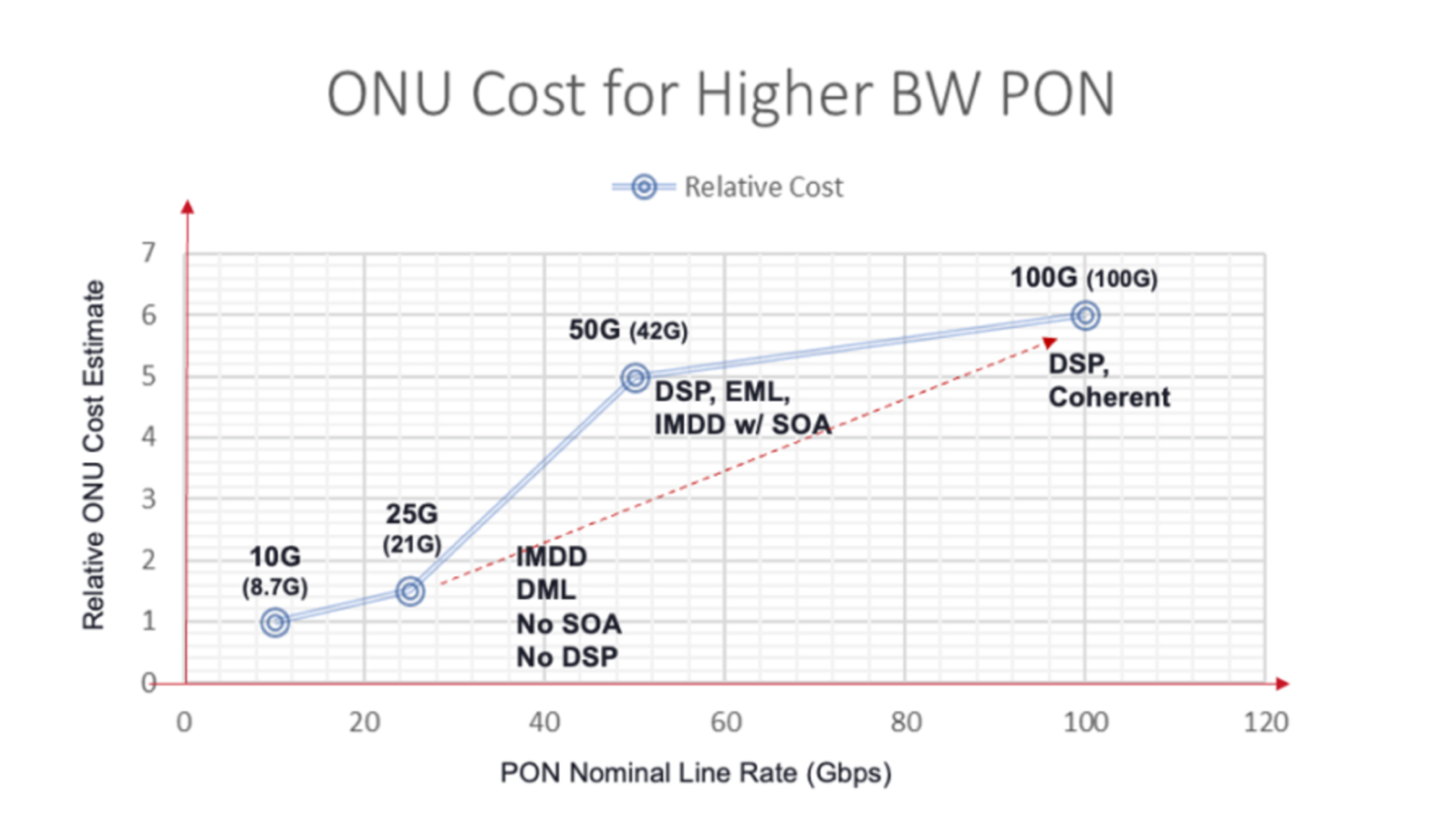The expected commercial introduction of next-gen PON rates in 2025 is poised to disrupt the broadband connectivity market. Ciena’s Jody Guthrie explains why 25GS-PON will have the early advantage in the move to higher speeds, and the critical importance of choosing a vertically integrated and multi-service optimized supplier.
PON technology first came onto the scene as a cost-effective point-to-point shared medium for residential broadband markets. Since then, it has proven to be a viable solution for additional use cases. As adoption of PON grows in the hospitality sector, campus environments, data centers, and other enterprise verticals, so does the demand for higher rates.
The disruptive nature of the next generation of PON, offering rates of 25G, 50G, and even 100G, is expected to reshape established business service markets with its cost-effective architecture and relatively high symmetrical rates. Because of this, PON presents an attractive value proposition for a wide range of businesses.
Let’s take a look at where the industry is headed.
Why 25GS-PON will gain traction
The favorable economics of 25GS-PON are one of the key factors driving its adoption. The cost of Optical Network Units (ONUs) plays a crucial role in the business case for PON deployments. The ONU alone could exceed over 75% of the active equipment cost in PON on a per-customer basis, and factors prominently in carrier selection of PON solutions. By leveraging the lower cost 25G ONUs, operators can make a stronger economic case for 25G PON over 50G PON. This is illustrated in the figure below.

Figure 1: Relative ONU cost estimates for moving from 10G future PON generations
When considering anticipated demand from a larger number of PON use cases, the path from 25G to 100G is more pragmatic and economically viable than that of 50G. The marginal cost difference between 50G and 100G ONUs, combined with the ability of 25G to address a range of new use cases at scale, makes it a compelling choice for future-proofing PON deployments.
Supplier considerations for next-gen PON
When selecting a supplier for the next generation of PON, three crucial factors should be considered: vertical integration, existing Optical Distribution Network (ODN) utilization, and multi-service optimization.
- Vertical Integration: By having more control over PON technology development, vertically integrated vendors can bring higher rates to market faster and with advantages in system performance and reliability, enabling customers to offer more competitive broadband services. Vertical integration is not new to Ciena—in coherent optics, sustained advantages in performance, reliability, and sustainability have benefitted customers for more than a decade. Additionally, Ciena remains committed to providing fully open solutions, ensuring interoperability with third-party ONUs across all PON rates.
- Existing ODN utilization: In considering the entire PON, active and passive, the ODN is the single largest investment in a carrier’s access architecture. Once PON fibers and splitters are installed they are expected to remain in service without modification for two decades or longer. All Ciena PON generations and next generation overlay technologies consider ODN reutilization as a primary design objective that must be met. Our currently proposed solutions, from 25GS-PON through to 100G coherent PON, are designed to utilize fiber network architectures that are already deployed for 1G/2.5G and 10G PON systems today.
- Multi-Service Optimization: Ciena's solution leverages a highly flexible portfolio of host routers, offering a common platform to address business, mobile, and residential services. This versatility is crucial as next-gen PON becomes an alternative for existing business services. The use of a mix of shared and dedicated fiber, reduced space and power consumption, and lower infrastructure costs further enhances the advantages for customers.
The future of PON: Coherent
The commercial introduction of next-gen PON rates in 2025 includes 25G and 50G, marking an important milestone in the networking industry, and I’m excited to see how it develops. But the innovation isn’t stopping there. Looking even further ahead, 100G coherent PON (CPON) is poised to be the future of PON technology. As such, the market's success hinges on favorable comparative pricing of CPON ONUs, which Ciena is ideally positioned to enable for our customers.
As it advances within standards bodies, Ciena is actively engaged with customers in charting a course to CPON operationalization. With established leadership in coherent optical innovation and vertical integration, Ciena is well-positioned to deliver high-performance solutions with lower space and power requirements. The ability of our PON and coherent R&D teams to collaborate and align their unique expertise ensures that customers can have confidence in Ciena's ability to lead the way in the next generation of PON.
As the future unfolds, CPON holds great promise, and Ciena's expertise and innovation make it an ideal partner for those seeking to embrace the next generation of PON technology.






